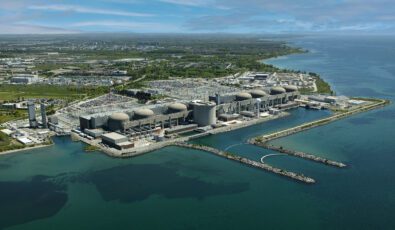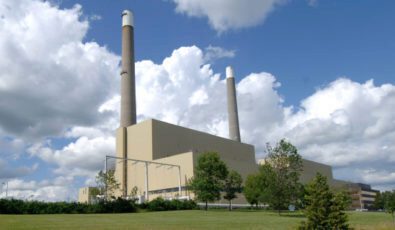Reaching new peaks: OPG responds to highest electricity demand since 2013
At a glance
- OPG’s reliable operations helped Ontario’s electricity grid manage extreme heat conditions in early September.
- Heat wave and other factors led to the highest electricity demand, outside of the pandemic, since 2013.
- OPG is now working to advance new forms of clean, reliable generation to meet future demand increases due to electrification.
When the heat was on this summer, OPG’s power helped keep Ontario cool, even as electricity demand hit its highest peak, outside of the pandemic, since 2013.

From September 4 to 6, the province faced a sweltering heat wave, with temperatures reaching 40 degrees Celsius with the humidex.
This extreme weather, coupled with more people working from home, the return to school, and shorter daylight hours, drove peak demand to 23,713 megawatts, the highest in 10 years.
During the pandemic, Ontario actually experienced a higher peak as large industrial and commercial companies participating in the Industrial Conservation Initiative weren’t required to reduce their electricity usage during peak hours. This measure aimed to support the province’s economic recovery during COVID-19.
In response to the latest summer spike, OPG’s employees and operations didn’t break a sweat, as the company’s diverse generating fleet provided more than 50% of the province’s electricity during this time.
While Ontario’s electricity system navigates through tight market conditions and anticipated growth over the coming years, every megawatt counts, especially on extreme weather days like we experienced in the recent heat wave.Lindsey Arseneau-MacKinnonVice President of Energy Markets
During the peak hour, the bulk of Ontario’s electricity was provided by carbon-free, reliable nuclear generation at 41%. Operating 24/7/365, baseload nuclear power serves as Ontario’s backbone. This was followed by natural gas at 31%, hydroelectric at 20%, imports at 4%, wind at 3%, and solar at 1%.

“While Ontario’s electricity system navigates through tight market conditions and anticipated growth over the coming years, every megawatt counts, especially on extreme weather days like we experienced in the recent heat wave,” said Lindsey Arseneau-MacKinnon, OPG’s Vice President of Energy Markets.
“As Ontario’s largest generator, OPG plays a critical role in meeting provincial demand. The Independent Electricity System Operator relies on us for our strong operating capabilities and flexibility to respond to changing market conditions.”
In the coming years, as Ontario grows and electrifies, electricity demand is expected to rise. OPG and its subsidiaries are preparing for this future by advancing new nuclear in the form of Small Modular Reactors, refurbishing its nuclear operations, investing in its hydroelectric operations, and progressing other new clean energy technologies, such as battery storage and low-carbon hydrogen.
To meet the peak demand earlier this month, all eight available nuclear units at OPG’s Darlington and Pickering Nuclear Generating Stations (GS) generated 20% of Ontario’s power, proving the importance of clean, reliable baseload nuclear power to the grid.

Meanwhile, OPG’s hydroelectric fleet demonstrated its value by generating 4,435 MW. The fleet also time-shifted generation to meet the increased demand, which means storing water overnight when demand is low and generating more electricity during the day when demand is high.
Through natural gas and biomass generation, OPG’s Lennox and Atikokan GS provided valuable energy and operating reserve, demonstrating the flexibility and usefulness of these assets to the grid during times of critical need.
Finally, combined-cycle natural gas stations in OPG subsidiary Atura Power’s fleet generated another 2,487 MW, operating at an 86% capacity factor. Gas generation plays a critical role in maintaining reliability in Ontario’s electricity system as it is versatile and can be easily dispatched when it’s needed most. Atura’s stations were especially important in providing support during this time as the shorter days reduced solar generating capacity.
“Our ability to respond to this increased demand demonstrates the adaptability and flexibility of our teams at OPG and Atura Power,” said Nicolle Butcher, OPG’s Chief Operations Officer. “Our employees’ hard work and dedication have been instrumental in keeping the lights on for Ontarians.”
Subscribe and stay informed
Sign up to receive the latest news, project updates, and event information from OPG.


